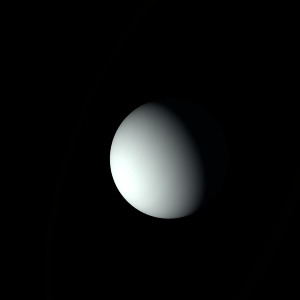|
|
Space Astro
|
Info for exoplanet "Kapethys"
| Scientific (actual) data |
|---|
| Planet | GJ 504 b |
| Planet status | Confirmed |
| Planet mass | 4 |
| Radius | 0.96 |
| Semi major axis | 43.5 |
| Discovered | 2013 |
| Updated | 2015-12-01 |
| Temp measured | 544 |
| Log g | 3.9 |
| Publication | Published in a refereed paper |
| Detection type | Imaging |
| Mass detection type | Spectrum |
| Radius detection type | Flux |
| Alternate names | 59 Vir b |
| Molecules | CH4 |
| Star name | GJ 504 |
| Right ascension | 199.2° |
| Declination | 9.42° |
| Mag v | 5.22 |
| Star distance | 17.56 |
| Star metallicity | 0.27 |
| Star mass | 1.22 |
| Star sp type | GOV |
| Star age | 0.16 |
| Star temperature | 6291 |
| Star alternate names | E Virginis, HR 5011, 59 Virginis |
| Wikipedia article | GJ 504 b |
Back
| |
| Fictional info (?) |
|---|
| Suggested name | Kapethys |
| Planet type | Large cold gas giant |
| The planet is named after the deity Kapethys, the god of love and beauty.
At this time it may appear as a bright star-like object, but is often far more difficult to observe than Casiarthrymr.
Its orbital eccentricity is the largest of all known planets in its solar system; at perihelion, Kapethys's distance from GJ 504 is only about two-thirds (or 69 pct) of its distance at aphelion.
It was the one of the first exoplanets visited by a spacecraft, and one of the first to be successfully landed on. Plans have been proposed for rovers or more complex missions, but they are hindered by Kapethys's strong magnetosphere.
Liquid water cannot exist on the surface of Kapethys due to low atmospheric pressure, which is less than 8 percent of Earth's, except at the lowest elevations for limited periods. |
| Atmosphere | CH4 | 99% |
| Atmospheric pressure | 1.4 bar |
 |
| No known satellites |
| Google search for Kapethys |
|
Website by Joachim Michaelis
|
|
|
|